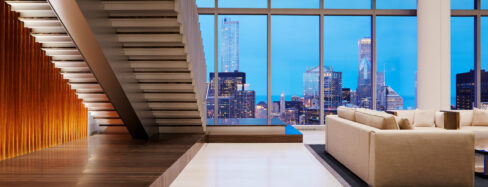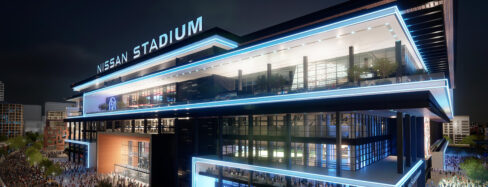TL;DR Human-centric lighting design is a vital approach that focuses on improving the well-being and comfort of individuals within the built environment. It emphasizes the incorporation of natural and artificial lighting in ways that mimic the positive effects of sunlight. We’re highlighting the importance of providing equitable access to daylight, implementing balanced light levels, and considering individual needs and preferences while emphasizing the need for evidence-based practices, and avoiding buzzwords without substantial scientific support.
In our unwavering dedication to improving the lives of those within the built environment, the concept of human-centric lighting design often takes center stage. Today, let’s delve deeper into this illuminating subject and explore how it truly puts humans at the heart of the equation.
Defining Human-Centric Lighting
Human-centric lighting is a design approach that revolves around what benefits humans most in a given space. Drawing inspiration from our greatest light source, the sun, this lighting strategy seamlessly integrates natural and artificial light to mimic its effects. One of its remarkable qualities is its innate ability to make us feel good in a space. This involves providing views to the outside, ensuring equitable access to daylight for all occupants, and implementing balanced light levels and adaptable controls that cater to individual needs.
Embracing Authenticity: Moving Beyond Buzzwords
It’s important to clarify what human-centric lighting is not, and that includes buzzwords like “circadian lighting.” As experts in our field, we exercise caution when incorporating new practices into our designs. While circadian lighting holds promise, we rely on rigorous scientific evidence before implementing it. Enhancing performance and productivity through lighting is subjective and varies for each individual. We take a holistic approach, acknowledging the multitude of factors at play in a person’s overall experience, both inside and outside the spaces we design. We recognize that scientific studies on circadian stimulus are still in their infancy, and their findings don’t always directly correlate with real-world observations.
Implementing Foundational Principles
Creating positive experiences through human-centric lighting design often involves returning to tried-and-true fundamentals. Collaborating closely with architectural design teams, we align our goals with theirs to develop balanced solutions for diverse spaces. In office buildings, for instance, we observe a trend of situating circulation areas on the building’s periphery and placing glass-fronted conference rooms on the inside, ensuring equitable access to light for optimal numbers of people. Thanks to advancements in glass insulation and technology, we are no longer constrained by the need for extensive heating and cooling systems, allowing for more expansive windows and greater connection with the outdoors.
Layered Brilliance: Striking the Right Balance
As lighting designers, we prioritize creating harmony through layers of light. Following guidelines set by the Illuminating Engineering Society (IES), we tailor lighting levels based on factors such as age and function to meet the diverse needs of occupants. Our approach extends beyond traditional practices, illuminating not only surfaces horizontally but also vertically. By lighting both the surroundings and task areas, we craft spaces that exude comfort with soft, glare-free lighting. Intuitive controls, effortlessly operated by end users or automated systems, ensure the right light levels are delivered at the right time, maximizing comfort and well-being.
Key Takeaways and a Bright Future
In our quest to fashion spaces that embrace and respect humans at a fundamental level, we find that an approach rooted in understanding and empathy yields the most effective results. Each project presents a unique opportunity to tailor solutions to the individuals who inhabit those spaces. As we continue to implement established best practices, we eagerly anticipate the unfolding possibilities that lie ahead. By staying informed and engaging in vital conversations, we strive to propel human-centric lighting design toward a future shaped by ever-evolving scientific insights.


